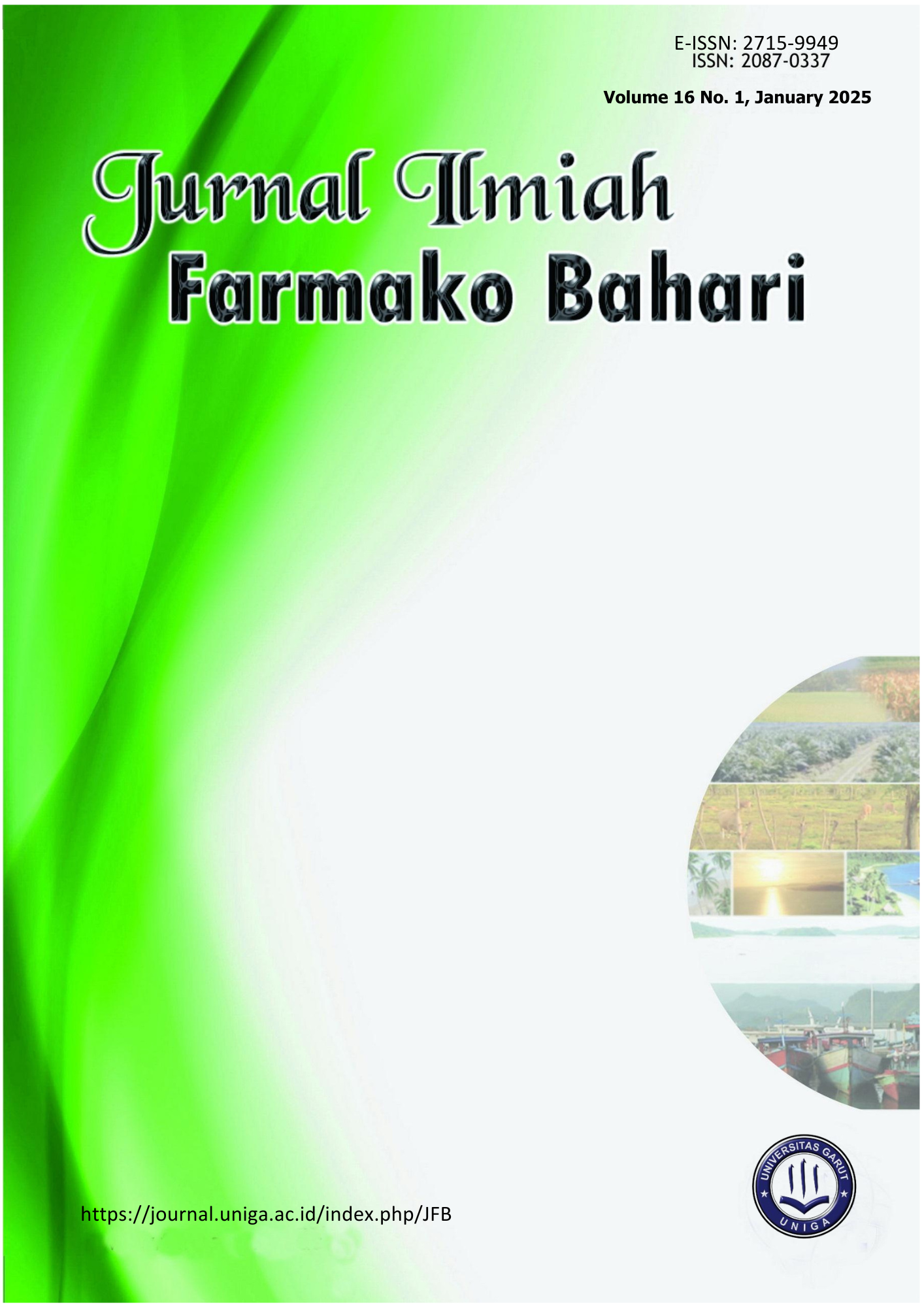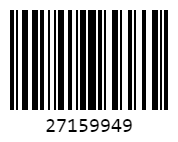EXPLORATION OF CHITINOLYTIC MICROORGANISMS FROM SEAWATER AS ANTI-CANDIDIASIS AGENTS USING FUNCTIONALIZED CHITIN SUBSTRATE DERIVED FROM GREEN MUSSEL WASTE
DOI:
https://doi.org/10.52434/jifb.v16i1.41855Keywords:
candidiasis, chitin, chitinolytic, green mussel, microorganismAbstract
Candidiasis is a Candida sp. infection (Candida albicans in common) that happens in nails, hairs, skin, and oesophagus, with around 20-25% prevalence in Indonesia. Chitin is one of the main components of its cell wall and serves as a target for candidiasis therapy using natural degradant compounds, such as chitinase enzyme. Chitinase enzyme is collected from chitinolytic bacteria found massively in chitin-rich environments like seawater. The screening is needed to identify the varieties of bacteria with chitinolytic activity. The screening was done using green mussel waste (Perna viridis), which contains 14-35% chitin and reached 10.776,75 tons of trash in 2020. This research aims to get a chitinolytic bacteria using green mussels as a chitin substrate source and a chitinolytic bacteria with anti-candidiasis activity. This research was conducted by isolating chitin from green mussel shells, chitinolytic bacteria screening, and anti-candidiasis activity test. Results collected from 5.00, 5.08, and 5.18 km isolates were the Vibrio alginolyticus, Vibrio neocaledonicus, and Marinobacter persicus species, which had a chitinolytic index of 1.246, 1.560, 1.492 also 64.29; 61.30; 69.01 U/ml chitinase enzymatic activity. The highest anti-candidiasis activity was found in a sample 5,18 km from the coast of Kejawanan Beach based on the number of chitinase enzyme activity and the chitinolytic index.
References
Sophia AS, Suraini. Efektivitas Perasan Daun Meniran (Phyllanthus niruri. L) sebagai Antifungi terhadap Pertumbuhan Jamur Candida albicans. BIOMA J Biol MAKASSAR. 2024;9(1):128-134.
Garcia-Rubio R, de Oliveira HC, Rivera J, Trevijano-Contador N. The Fungal Cell Wall: Candida, Cryptococcus, and Aspergillus Species. Front Microbiol. 2020;10. doi:10.3389/fmicb.2019.02993
Sudin S, Sulistijowati R, Hermain RM. Screening And Growth Patterns Of Chitinolytic Bacteria From The Shells Of Crab (Portunus pelagicus). Jambura Fish Process J. 2020;2(1):36-45. doi:10.37905/jfpj.v2i1.5961
Pentekhina I, Nedashkovskaya O, Seitkalieva A, et al. Chitinolytic and Fungicidal Potential of the Marine Bacterial Strains Habituating Pacific Ocean Regions. Microorganisms. 2023;11(9):2255. doi:10.3390/microorganisms11092255
Safitri N, Wahana S, Hudaya AR. Pengaruh Kualitas Produk, Harga dan Lokasi terhadap Keputusan Pembelian Kerang Hijau (Perna viridis L.). Paspalum J Ilm Pertan. 2023;11(2):395-405. doi:10.35138/paspalum.v11i2.632
Arsyi NZ, Nurjannah E, Ahlina DN, Budiyati E. Karakterisasi Nano Kitosan dari Cangkang Kerang Hijau dengan Metode Gelasi Ionik. 2018;2.
Peykov S, Strateva S. Whole-Genome Sequencing-Based Resistome Analysis of Nosocomial Multidrug-Resistant Non-Fermenting Gram-Negative Pathogens from the Balkans. Microorganisms. 2023;11(3). doi:10.3390/microorganisms11030651
Setyawati R, Zubaidah S. Optimasi Konsentrasi Primer dan Suhu Annealing dalam Mendeteksi Gen Leptin pada Sapi Peranakan Ongole (PO) Menggunakan Polymerase Chain Reaction (PCR). Indones J Lab. 2021;4(1):36-40. doi:10.22146/ijl.v4i1.65550
Syamsidar H, Ramayana R, Ramadani K. Pemanfaatan Limbah Cangkang Kerang Hijau (Perna Viridis) Menjadi Kitin Sebagai Biokoagulan Air Sungai. Al-Kim. 2017;5(1):89-99. doi:10.24252/al-kimia.v5i1.2859
Nurmalinda A, Mubarik NR, Sudirman L. Seleksi dan Karakterisasi Bakteri Penghasil Kitinase Penghambat Pertumbuhan Cendawan Patogen Tanaman. J Ilmu Pertan Indones. 2020;25(1):35-42. doi:10.18343/jipi.25.1.35
Downloads
Published
Issue
Section
License
Copyright (c) 2025 Jurnal Ilmiah Farmako Bahari

This work is licensed under a Creative Commons Attribution-NonCommercial-ShareAlike 4.0 International License.
or all articles published in Jurnal Ilmiah Farmako Bahari, the copyright is retained by the journal. Articles are published under the terms of Creative Commons Attribution-ShareAlike 4.0 International License (CC-BY-SA 4.0) . For Authors:
|


1.png) Download Journal Template
Download Journal Template
.png)









